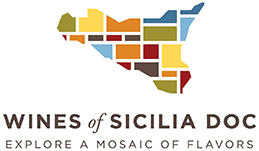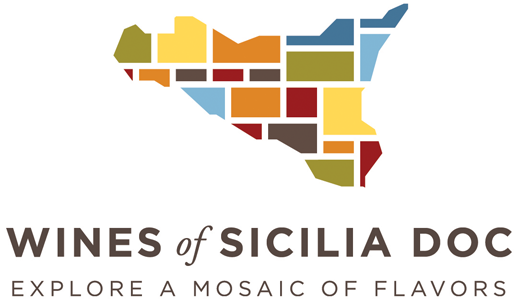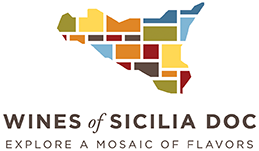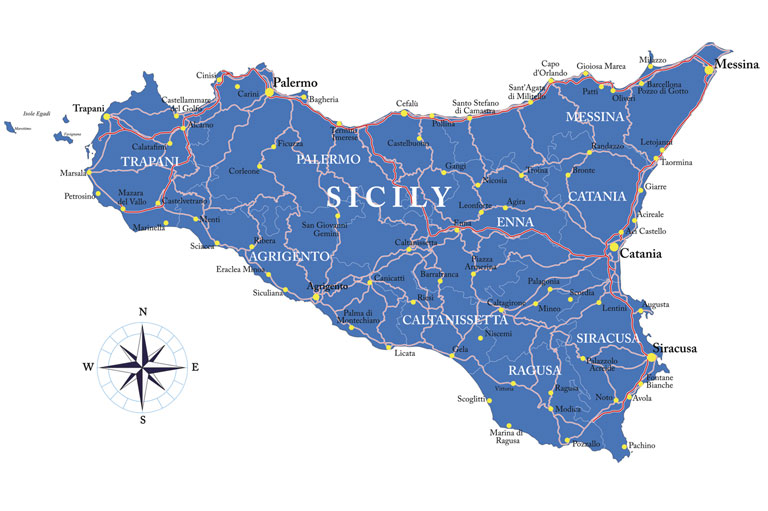
The Provinces
The Italian region of Sicily is divided into nine provinces that include more than 1,000 miles of coastline, natural reserves, the largest volcano in Europe and endless cultivated hills and plains. It is a diverse mosaic of microclimates and soil types that are ideal for quality wine production. In the United States especially, Sicilian wines have become the darlings of sommeliers and consumers looking for distinctive bottlings at a good value.
Sicily is a traveler’s dream—encompassing a wide array of cuisines, wines and breathtaking views.
The Sicilia DOC wineries cover the entire island of Sicily, each bringing their own unique story and approach to winemaking.
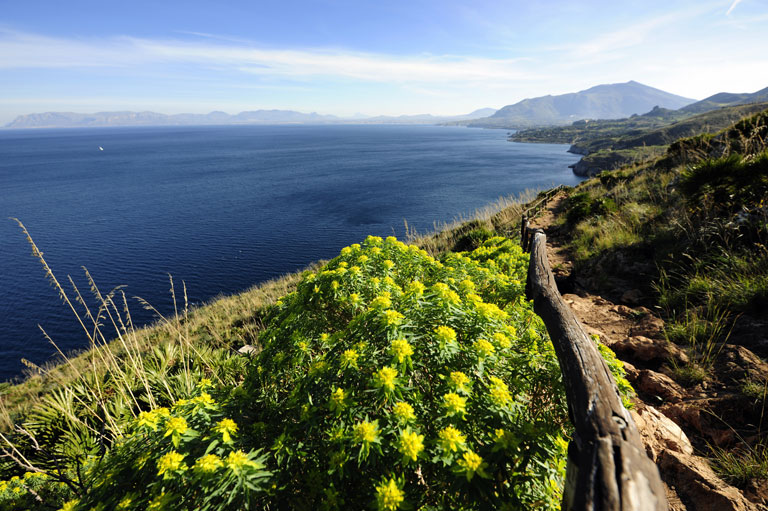
Western Regions
The Western regions are home to many wineries that can offer hospitality excellence. Planning a journey in this part of Sicily means you can stroll along unspoiled sun-kissed coasts such as San Vito Lo Capo, Scopello, Lo Zingaro Nature Reserve or the salt pans of Marsala in the Stagnone Reserve and Trapani. Just a few miles away from Trapani you can reach Erice, where time seems to have stopped several centuries ago. There are so many different cultures, cuisines, histories and traditions to discover, from Palermo’s ancient markets to its various museums and cathedrals. Traveling down the southwest coast, you navigate through a sea of vineyards until you reach Agrigento, where the temples dominate a breathtaking valley. Along this slice of Sicily, white-berried grapes such as Grillo, Grecanico and Lucido (Catarratto) are predominant and best express themselves, but Nero d’Avola and Perricone are still very present. More than 80 percent of all vineyards on the island can be found between Agrigento, Palermo and Trapani.
The Province of Trapani encompasses the westernmost promontory of Sicily. The province is blessed with ample sunlight and moderate warm weather, offering some of the best grape growing conditions on the island and resulting in Trapani being the most-planted province in Sicily. Winegrowing areas in the southern part of the province experience a warm and dry summer, while areas to the north benefit from a more temperate climate and a gentle rise in elevation toward the east. This diversity results in a broad range of fresh, ripe, fruit-forward white wines and powerful yet elegant red wines. Soils range from sandy loam to rocky with calcareous clay. Important subregions in the Province of Trapani include Alcamo, Erice, Gibellina, Marsala, Mazara, Salaparuta and Salemi.
The Province of Palermo spans nearly half of Sicily’s northwest coastline, extending south into the hills and plateaus along the island’s interior. The province is marked by the Madonie mountain range in the east. Vineyards, at altitudes ranging from 500 to 2,400 feet above sea level, receive bountiful sunlight, with proximity to the sea bringing a cooling, maritime influence. Soils are sandy and rocky, with loess (windblown silt). The white wines offer a crisp and fresh flavor, while red wines feature savory fruit with refined tannins. Important areas in the Province of Palermo include Camporeale, Contessa Entellina, Corleone, Monreale, Partinico, San Giuseppe Jato, Santa Cristina Gela, Sclafani Bagni and Valledolmo.
The Province of Agrigento stretches along Sicily’s southwestern coastline, with warm and dry inland terrains and breezes arriving from the Mediterranean Sea. This historic area of Sicily is known for expressive, light white wines and full-bodied red wines. Soils are composed of ancient marine fossils and sedimentary marl (limestone, clay and silt) transitioning to rocky areas in higher elevations. Vineyards in proximity to the sea add a fresh and savory quality to the wines. Important areas in the Province of Agrigento include Santa Margherita, Belice, Menfi, Sciacca, Sambuca di Sicilia, Grotte and Campobello di Licata.
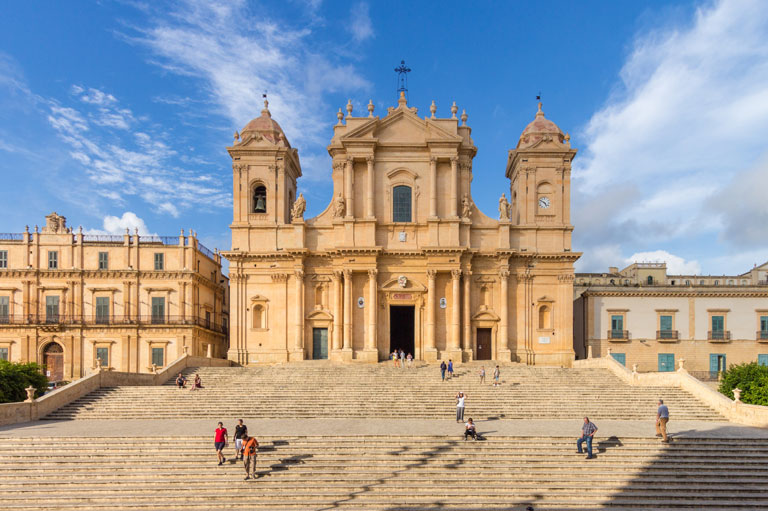
Southern Regions
In the Southern regions, the coast continues to be wonderful and the vineyards reign over the unspoiled Mediterranean scrub, finding idyllic terroirs on the plateaus between Caltanissetta and Riesi. Entering the towns, the Baroque becomes protagonist, designing exciting and incredible settings. The capital of the Baroque, Noto, enchants with its artistic beauty. As in the Western regions, the quality brand of Sicilia DOC is represented by both oenological and hospitality excellence, capable of transforming your trip into a thrilling sensory journey. Nero d’Avola and Frappato are the most cultivated vine varieties; in this zone they find the perfect pedoclimatic situations for best expressing themselves, while the white varieties such as Grillo, Lucido (Catarratto) and Grecanico offer bouquets that are completely different from other zones.
The Province of Caltanissetta begins at Sicily’s southern coast and reaches far into the heart of the island, following the contours of the Salso River valley. Its rolling hills and high-elevation vineyards are sheltered from extreme weather on all sides by highlands and the peaks of nearby mountain ranges. Grapes here benefit from hot days and very cool nights. Although a majority of vineyards are found at higher elevations, some are planted very close to the sea. Soil types alternate from sandstone at higher elevations, to calcareous clay, while ancient marine fossils can be found throughout the lower areas. Because of the broad swings in temperature between day and night, grapes from Caltanissetta produce an array of fresh white wines and full-bodied red wines. Important areas in the Province of Caltanissetta include Butera and Gela.
The Province of Enna lies in the central east of Sicily’s heart. It is a warm, fertile and arid province marked by gently rolling hills and steep geologic outcroppings. Soil compositions vary here as much as the terrain, featuring concentrations of rock, clay and silt. As a result, the wines can show a variety of styles. White wines are aromatic and fresh, with moderate alcohol and healthy acidity. Red wines are smooth, showing fresh fruit and supple tannins. The most important area in the Province of Enna is Piazza Amerina.
The Province of Ragusa shares the southeast corner of Sicily with the Province of Siracusa. This warm and windy area spans the rolling hills and steep valleys between the Hyblaen Mountains and the Mediterranean Sea. Limestone outcroppings, clay, rock, sand and ancient marine fossils mark the plains. Wines here are primarily red, featuring a range of styles from light and floral to full-bodied and spiced. Important areas in the Province of Ragusa include Acate, Chiaramonte and Vittoria.
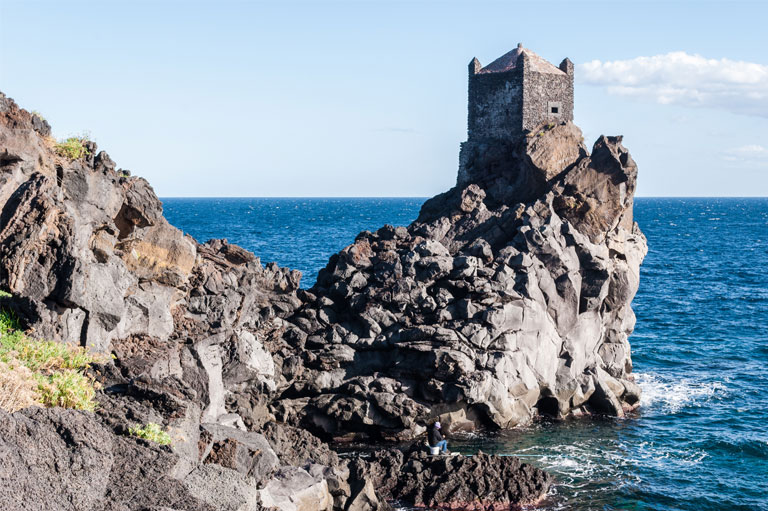
Eastern Regions
The Eastern region has the greatest diversity, with the beaches of Siracusa and Ortigia interrupted by parts of a very jagged, rocky coastline, reaching from Acireale to Catania and up to Taormina, where the alternation between sand and rock creates a special charm. As in the Western region, various museums, as well as Catania’s markets and Taormina’s alleys, make this zone a key destination for your trip to Sicily. The hinterland is characterized by the volcano Etna and the Peloritani and Nebrodi mountains. Difficult zones for vines, however, in the highlands, valleys and terraces express themselves in a unique way. Sicilia DOC awaits you with oenological excellence and stunning facilities in these zones, to complete your wine tourist experience in Sicily.
The Province of Siracusa falls along the southeast coastline of Sicily. The landscape is distinguished by the undulating hills that end at the sea, and the soil compositions around Siracusa are mixed with limestone at higher ground, clay in the sloping hillsides, and sandy loam nearest to the sea. This is a hot and arid winegrowing area with the potential to make powerful red wines with sultry fruit, and ripe aromatic white wines that are most often used for the production of sweet styles. The most important areas in the Province of Siracusa are Noto and Pachino.
The Province of Catania is positioned on Sicily’s east coast. The landscape here differs from the rest of Sicily due to the presence of Europe’s largest volcano, Etna. Etna creates multiple microclimates due to its continuous activity, with sharp shifts in altitude and aspect to the Ionian Sea. The soils, volcanic, with concentrations of clay, silt, metals and minerals, produce white wines featuring elegant fruit, healthy acidity and sapid flavors. Red wines show fresh red fruit flavors and ripe, structured tannins. The most important areas in the Province of Catania are Trecastagni, Linguaglossa and Castiglione di Sicilia.
The Province of Messina spans the northern coastline of Sicily’s northeast corner and is the province closest to the Italian peninsula. Throughout the Messina area, various geologic contours and microclimates contribute to a diversity of wine styles. Tucked between three mountain ranges—the Madonie, Peloritani and Nebrodi—and the Tyrrhenian Sea to the north and the Ionian Sea to the east, Messina is a sunny, warm, windy and wet province. Soils are deep, iron-rich and fertile. Red wines range from light and medium-bodied to deeply colored, tannic and full-bodied, and very few white wines are made here. The most important areas in the Province of Messina are Santa Lucia Del Mela, Piraino and Rodì Milici.
